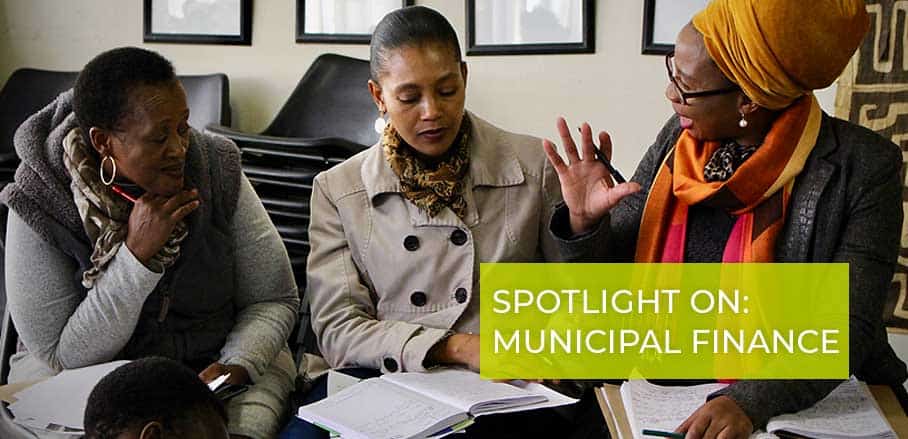Real World Civic Tech Implications of South Africa’s Grassroot Platform
Enabling participatory democracy is the goal of South Africa’s online platform Grassroot, where community members get together to change their municipalities for the better – with considerable success, as Katlego Mohlabane, outreach and campaigns coordinator at Grassroot, illustrates with examples from Mnandini and Mzondi.
A Tradition of Collective Action
South Africa’s resources are deep. Our traditions of collective action are rooted in the struggle against Apartheid, and our Constitution makes explicit the right to dignity and to participation. Both the right to dignity and participation had seemed to have taken the back burner in recent years as ordinary citizens had prioritised economic freedom and personal well-being.
It had grown harder for citizens to participate in governance and those that tried to organise were faced with the challenge of having to identify those who are still keen on citizen engagement, often under-resourced. This meant walking around with a loud hailer or printing out leaflets, letting those interested in change know that they exist: movements that aim at systemically changing the standards of living and exercising their basic human rights.
Grassroots Activism
Grassroot’s objective was simple: to create a tool to make organising within a community effective without having to bear the brunt of heavy costs – the second aspect being especially essential in communities where people often have to choose between communication and food (South Africa has one of the highest cellular and internet data costs in Africa and the world). Its small, five member team is intently focussed on being user-first, not technology-first, and on building a platform that provides real world solutions for people living in the most marginalised parts of South African society.
Mnandini: Holding the Government Responsible
One particularly striking case is that of Mnandini, an informal settlement west of Johannesburg. The township has existed for nearly 20 years now, ever since residents had been placed there by government with the plan of building houses for them. As regimes changed, one would blame the previous one for bad record keeping and tell them that there were no immediate plans to provide them with municipal services and build the houses that they had been promised. Separately, they had written letters to government, protested, and approached their local community leaders asking for answers.
Collectively, as one of the first community groups on the Grassroot platform to cross the 1000 member mark, they have been able to write petitions with a massive number of signatures, demanding the city make clear what its intentions are and managed to have the first show house built in 2018, demonstrating the type of houses that will soon be built in that community.
They also had community meetings where, for the first time, the local ward councillor came together with representatives from the national electricity provider, the company in charge of the city’s waste removal, and the department of housing to hear out residents’ grievances and make commitments in the presence of everyone in the community.
Mzondi: Enforcing the Right to Dignity
Another informal settlement, Mzondi, this time located east of Johannesburg, was faced with a multitude of issues. The first was that their shacks had been erected on the border between the cities of Johannesburg and Ekurhuleni, putting up for debate which municipality is responsible for Mzondi. Court ruled that they belonged to the city of Ekurhuleni.
The city government then claimed it had a court order to evict them, which was used as a basis for not providing them with municipal services, branding them as illegitimate. The community of Mzondi had a total of four functioning pit latrine style toilets serving an unrecorded number of inhabitants occupying over 400 shacks.
Their priorities were a little different from Mnandini: before they could worry about having electricity installed for them or being provided with sanitation by the government, they had to restore the dignity of their residents who had to stand in queues to relieve themselves in the four pit latrines that existed in the community.
Two of the latrines were unroofed and did not have very high walls, which meant that the people using them would have to rely on everybody else looking away out of respect. Furthermore, they were rendered useless in instances of bad weather. Another danger these pit latrines posed was that they were constructed by community members who were not professionally skilled. Some of the toilet seats were big enough to have children fall into these massive holes that extended several meters underground.
The community of Mzondi took collective action after using the Grassroot platform to hold meetings twice weekly with all the residents; their goal was to initiate a crowdfunding process. They created an account on the website thundafund.com and raised 68,000 Rand to build themselves nine fully flushing toilets to supplement the four that were already in existence. They plan to use the money that was left over from that project to buy pipes that will see them improve their water supply.
More Stories to Come
Other successes on the Grassroot platform include a civil society organisation that has increased its membership from 14,000 to 50,000 members within three years, a television show facilitating political debate enabling over 100,000 people make their voices heard in one night using the platform, and many other unrecorded stories from the 500 000+ users who are currently on the platform. The success of a platform like Grassroot means that ordinary citizens become active, accountability gets to be enforced and democracy to be strengthened, but most importantly it provides another option for shaping society in South Africa – through solutions that harness the power of collective action.
